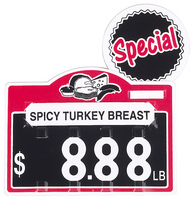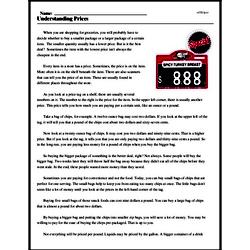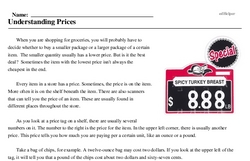Understanding Prices
When you are shopping for groceries, you will probably have to decide whether to buy a smaller package or a larger package of a certain item. The smaller quantity usually has a lower price. But is it the best deal? Sometimes the item with the lowest price isn't always the cheapest in the end.
Every item in a store has a price. Sometimes, the price is on the item. More often it is on the shelf beneath the item. There are also scanners that can tell you the price of an item. These are usually found in different places throughout the store.
As you look at a price tag on a shelf, there are usually several numbers on it. The number to the right is the price for the item. In the upper left corner, there is usually another price. This price tells you how much you are paying per a certain unit, like an ounce or a pound.
Take a bag of chips, for example. A twelve-ounce bag may cost two dollars. If you look at the upper left of the tag, it will tell you that a pound of the chips cost about two dollars and sixty-seven cents.
Now look at a twenty-ounce bag of chips. It may cost you two dollars and ninety-nine cents. That is a higher price. But if you look at the tag, it tells you that you are only paying two dollars and thirty-nine cents a pound. So in the long run, you are paying less money for a pound of chips when you buy the bigger bag.




